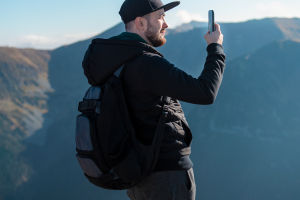Capturing mouthwatering food photos is both an art and a science.
Whether you're sharing your culinary creations on social media or simply preserving memories, knowing how to use light, angles, and plating can transform ordinary food shots into appetizing works of art.
This article will guide you through essential techniques to make your food photos more inviting and professional-looking, even with simple equipment.
Use Natural Light to Bring Food to Life
Light is the most important ingredient in food photography. Natural light, especially soft light from a window during morning or late afternoon, enhances the colors and textures of your dishes. Position your food near a window with indirect light to avoid harsh shadows and blown-out highlights.
If natural light is limited, use a diffuser or a white curtain to soften direct sunlight. Side lighting or backlighting creates depth and highlights the food's details, such as the glisten on a sauce or the crisp edges of a crust.
Explore Different Angles for the Best View
Choosing the right angle can dramatically affect the appeal of your food photo. For flat dishes like pizzas or salads, photographing from above (a bird's-eye view) captures the entire plate and arrangement. For layered or tall foods like burgers or cakes, capturing at a 45-degree angle showcases height and texture.
Close-up shots reveal intricate details like steam rising or the crumb of bread. Experiment with multiple angles to find the one that best tells the story of your dish.
Perfect Your Plating for Visual Harmony
Plating is not just about taste but also visual balance. Use the principles of symmetry and asymmetry to create harmony and interest. Arrange food with contrasting colors and textures to make the plate pop. Garnishes like fresh herbs, edible flowers, or a drizzle of sauce add freshness and sophistication.
Pay attention to negative space—don't overcrowd the plate, allowing each element to stand out. Clean the edges of plates to avoid distracting smudges or spills.
Choose Backgrounds and Props Wisely
The background and props set the mood for your food photo. Neutral, textured surfaces like wood or stone complement most dishes without stealing attention. Simple tableware and cutlery add context without clutter. Use complementary colors to enhance the food's vibrancy—for example, a blue plate makes orange foods stand out.
Avoid overly busy backgrounds that distract from the main subject. Sometimes a shallow depth of field helps blur the background, keeping focus on the food.
Capture the Story with Action Shots
Adding movement or interaction brings life to your food photography. Capture pouring sauces, sprinkling spices, or a hand reaching for a bite. These moments create a narrative and engage viewers emotionally. Use a fast shutter speed to freeze motion or a slower speed for artistic blur effects. Action shots make your photos dynamic and memorable.
Edit Thoughtfully to Enhance Natural Beauty
Post-processing can refine your food photos. Adjust brightness, contrast, and saturation to make colors pop without looking artificial. Crop to improve composition and remove distractions. Use editing apps that allow selective adjustments to enhance textures or highlights. Avoid heavy filters that alter the food's natural appearance.
The goal is to make your dish look as delicious as it tastes.
Final Thoughts: Make Every Food Photo a Feast for the Eyes
With the right use of light, angles, plating, and thoughtful editing, you can create stunning food photos that invite viewers to savor every detail. Practice regularly and observe your favorite food photographers for inspiration. What's your favorite dish to photograph?
Share your tips or questions—we'd love to hear how you make your food photos irresistible!


